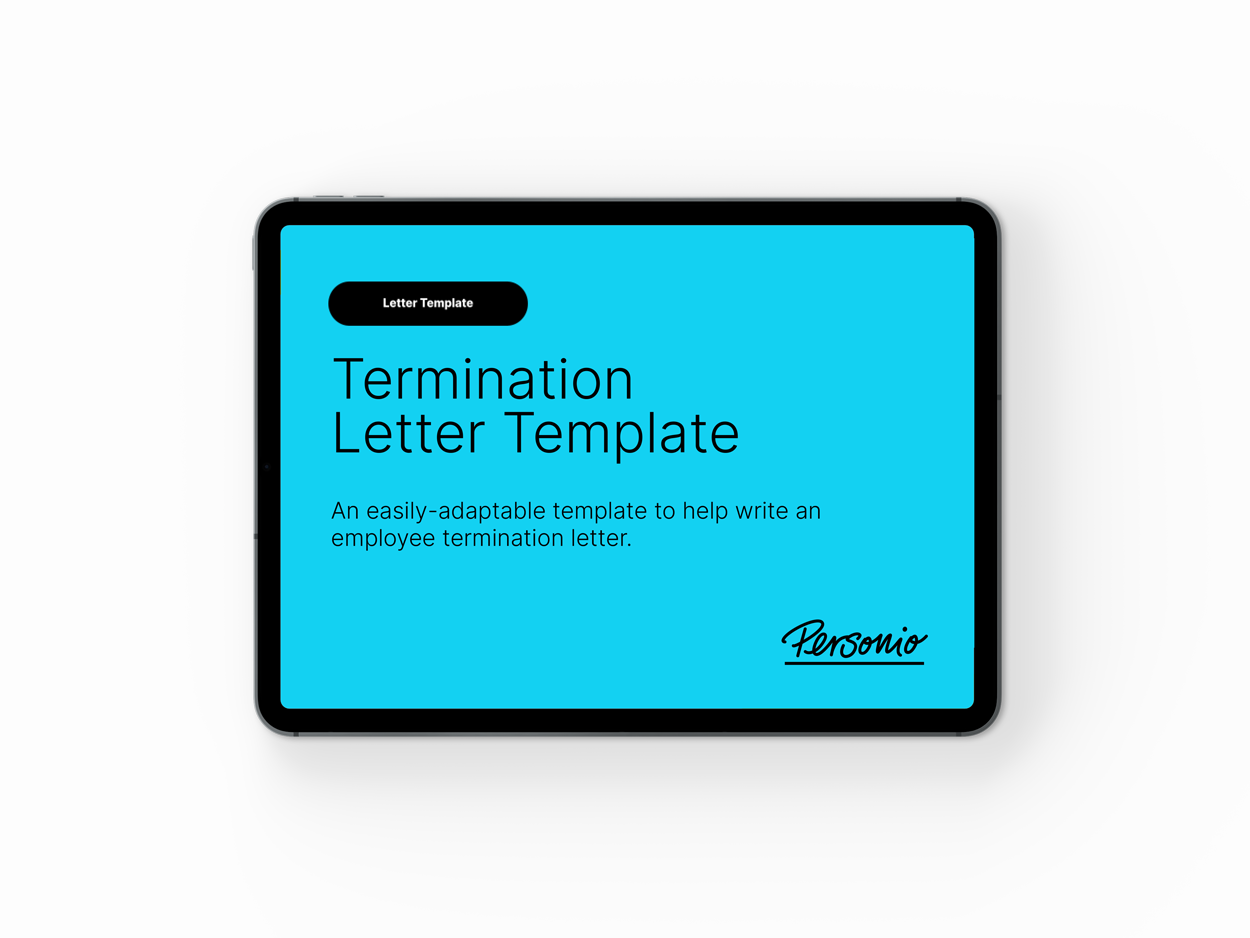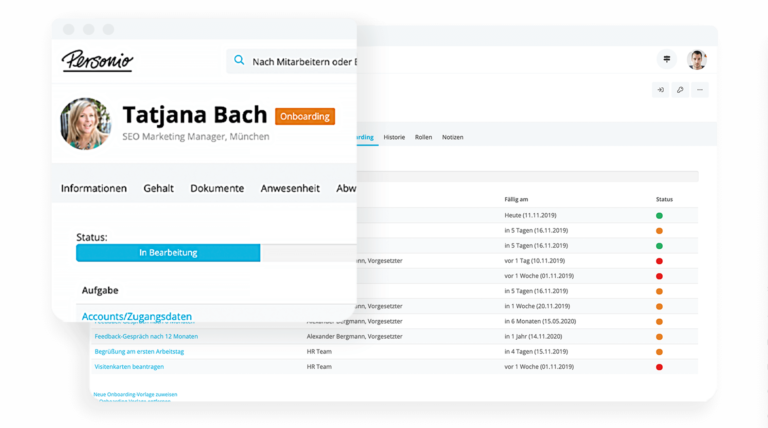Compulsory Redundancy: Rights, Processes, Examples

Sometimes, compulsory redundancy may be the only way to overcome difficult circumstances in an organization. While you can try to avoid this process by cutting costs, going remote, or offering voluntary redundancy, it may be unavoidable.
If you're currently trying to navigate the process of compulsory redundancy in the UK, here’s what you need to know about employee rights and proper legal procedures, along with a few helpful examples.
Trust our termination letter template to help serve notice seamlessly.What Is Compulsory Redundancy?
Compulsory redundancy, also known as mandatory redundancy, is when a business terminates a contract with an employee due to business circumstances rather than behavioural or performance-related issues.
The most common reasons for compulsory redundancy are when employers are:
Reducing their number of staff
Moving locations
Changing their services
Completing shutting down operations
When a business is shutting down a department, or their entire company, the process of compulsory redundancy is a bit more straightforward, as leadership doesn’t have to decide which individual employees are to be made redundant.
However, if you’re reducing staff, you’ll have to decide which individuals you let go, which can often feel more personal to the employee and may draw accusations of unfair termination or discrimination.
Of course, neither of these situations is ideal, which is why companies often offer voluntary redundancy before moving forward with compulsory redundancy.
Voluntary vs. Compulsory Redundancy
The difference between voluntary and compulsory redundancy is fairly cut and dry. If an organization offers voluntary redundancy, employees will have the opportunity to volunteer for dismissal, whereas compulsory redundancy doesn’t offer that chance.
By offering voluntary redundancy to your employees, you’re involving them in the process more and giving them a say in what’s happening, which can make the experience as a whole a bit less painful.
Centralise your employee data

Stop relying on lists and spreadsheets. Organise and edit personnel files and documents with ease, all in one secure, legally compliant place.
Protect your people filesWhat Are Alternatives To Compulsory Redundancy?
Compulsory redundancy should always be the last resort when facing a large organizational issue. Before dismissing employees, consider the following:
Reducing Hours Or Days Worked
Introduce a revised work schedule that includes reduced hours or days worked (either temporarily or permanently). Although this involves a salary cut for the employees, it also allows them to take on secondary work to supplement their lost wages, if needed.
Furlough
When you furlough an employee, they’re temporarily suspended without pay for a specific period. This can be a good option for a company if they know they can furlough a certain number of employees for a certain amount of time each year to save money and avoid compulsory redundancy.
Retraining Employees
Are you able to retrain and reassign workers from redundant departments to keep them on staff? If there’s one department that’s busy, growing, or needs help, this could be an effective solution, even if it’s only temporary.
Restricting Or Banning Overtime
Cutting overtime isn’t a popular decision in the eyes of employees, but it can give companies the extra financial leeway they need. If deemed appropriate, explain to your employees that you’re cutting overtime to avoid compulsory redundancy. Remaining transparent can help them understand and accept the circumstances.
Introducing Job Shares
Job shares are when two or more employees split a full-time job. The employees involved must agree on how they split their hours and days worked, as well as their roles and duties. Job shares work best when employees volunteer for them, as it can be a difficult situation to navigate otherwise.
Offering Voluntary Sabbaticals
Survey your employees to see if there’s any interest in taking an unpaid sabbatical from work. If an unpaid sabbatical is financially possible for an employee, it can be seen as a positive experience; an opportunity for them to recharge, focus on passion projects, travel, or spend more time with family.
Offering Early Retirement
If you have employees who are close to retirement, try to incentivize them to take that next step. If their positions are still needed, other employees — who would’ve otherwise been made redundant — will then have the chance to stay with the company, though they may need additional training depending on the role change.
Check out our guide to perfecting your succession planning process today.
Make Other Cuts
Instead of compulsory redundancy, can you find savings in other aspects of the business? Would employees be open to more annual leave in exchange for a salary reduction? Can the office move to remote working to cut down on rent, overhead, and supplies? Is there too much money being spent on entertainment and workplace events? No matter where cuts are made, it’s important that you discuss these changes with employees so they know what’s going on and why it’s happening.
The 6-Step Compulsory Redundancy Process
Under UK law, businesses must follow a number of compulsory redundancy terms, including establishing a compulsory redundancy process, considering all alternatives, and selecting employees fairly.
Tip: Thoroughly and clearly document your decision-making process during this time to avoid unfair dismissal claims. Include your redundancy process in your contract or staff handbook to ensure transparency. At a minimum, your company’s compulsory redundancy process should include:
How the company chooses which employees to make redundant.
How long the decision will take.
What meetings will be held and when.
How an employee can appeal their redundancy.
Here’s a closer look at the process:
1. Confirm And Clarify
Before you begin the compulsory redundancy process, make sure that it’s absolutely necessary. Review your business’s needs, obstacles, and all other alternatives to confirm that there are no other viable options. If you have the time and resources, test out alternatives for a specific period of time before committing to compulsory redundancy.
Once leadership has decided that compulsory redundancy is the way forward, the next step is to determine which roles and departments should be made redundant.
2. Select Employees
Before you deliver redundancy notices, decide which criteria you’ll be using to determine dismissals. In this situation, you’ll want to select clear criteria and metrics.
For example, you may consider employees who have a history of poor performance or those who have multiple disciplinary actions against them. Or, you could take a last-in-first-out approach, where the most recent hires are the ones who are let go.
Another option is to determine redundancy by skill set or qualifications, as you’ll want to keep your strongest, most qualified employees around.
Remember: It’s against discrimination law to select anyone for redundancy based on reasons such as age, disability, gender, marriage status, pregnancy or maternity leave status, race, or religion.
3. Offer Voluntary Redundancy
While employers don’t have to offer voluntary redundancy, it can be used to soften the blow of dismissal, giving employees the opportunity to choose their next step.
Sometimes, though, voluntary redundancy isn’t enough. You may still have to move forward with the compulsory redundancy process if no employees volunteer, or if further financial cuts are needed.
Even if an employer doesn’t offer voluntary redundancy, employees can still put themselves forward for it, though their employer doesn’t have to consider or accept their offer.
4. Conduct Consultations
Employees who are being considered for compulsory redundancy are entitled to a consultation with their employer before a final decision is made. This formal process includes, at minimum, one meeting.
During this meeting, the employer and employee will discuss why the redundancies are needed, why the specific employee is being considered for redundancy, what, if any, other jobs are available for them, and any other questions or concerns they have.
The employee should be given the opportunity to explain why they shouldn’t be dismissed, or why they believe their dismissal is unfair. Employees have the right to a representative at this time, which could include a Trade Union Representative or someone of the employee’s choosing.
If more than 20 employees are made redundant within 90 days (also known as a collective redundancy), the employer must hold consultations with the employees’ representatives rather than each individual employee.
For groups of 20 to 99 employees, consultations must begin at least 30 days prior to employees receive their notices of dismissal. For groups of 100 employees or more, consultation must begin 45 days prior.
5. Deliver Compulsory Redundancy Notices
Employees must receive a compulsory redundancy notice, which should include how long the notice period is, when it begins, and whether it’s compulsory or contractual. The employer must also continue to pay the employee until the end of their notice period.The amount of notice an employee receives depends on their seniority (employers can give more notice, but not less):
Employees who have been with the company for one month or less don’t have to receive notice.
Employees who have been with the company for at minimum one month and up to two years should receive at least one week’s notice.
Employees should receive one week’s notice for each year of their employment, up to 12 years.
If an employee has been with the company for over 12 years, the employee should receive 12 weeks’ notice.
Looking to learn more about putting employees on gardening leave? Read our guide here.
6. Organise and Distribute Redundancy Payment Packages
Employees who worked with the company for over two years are eligible for weekly Statutory Redundancy Pay, which is calculated by age and workplace history:
Employees will receive half a week’s pay for each full year they were under 22 years old while employed by the company.
Employees will receive one week’s pay for each full year they were between 22 and 41 years old while employed by the company.
Employees will receive one and a half week’s pay for each full year they were 41 years old or over while employed by the company.
To calculate an employee’s weekly pay, find the average amount they were paid per week for the 12 weeks prior to their redundancy notice. The maximum an employee can receive through this program is currently £544 per week. Redundancy pay under £30,000 is not taxable.
Conditions: Employees may not be eligible for redundancy pay if their employer offers them an appropriate work alternative and they decline without proper reasoning. There are also several industries wherein employees may not be eligible, including former registered dock workers, crown servants, domestic servants, and more.
Finding An Easier Way Through A Difficult Process
While letting an employee go is never easy, compulsory redundancy can be especially difficult for everyone involved.
To make the experience more manageable for all, follow a clear and transparent process and know what rights your employees have in terms of notices, consultations, and pay.
Finally, explore and test alternatives or offer voluntary redundancy before finally taking action, as compulsory redundancy should only be used as a last resort.


